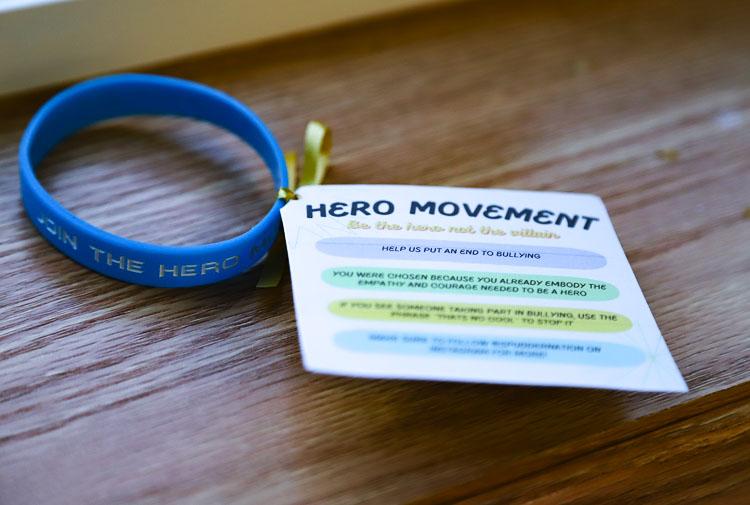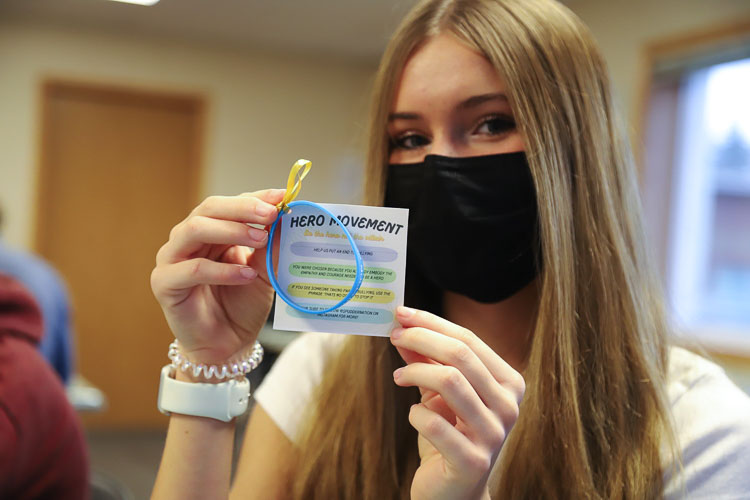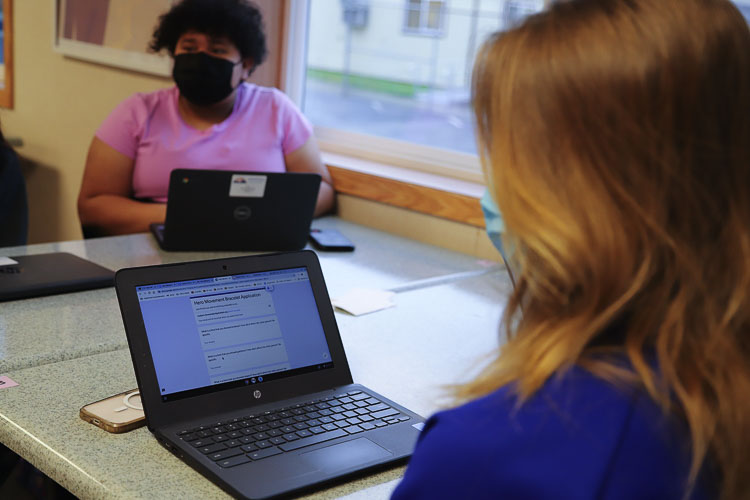The Hero Movement is distinct from other anti-bullying campaigns because it was created by students, for students
With students all over the Ridgefield High School campus sporting blue bracelets, classroom speakers come to life as the daily announcement is read over the intercom. “Hey Spuds, join the Ridgefield Hero Movement!” Posters adorning the walls in the school’s hallways read, “Be a Hero, Not a Villain.” This might sound like a grassroots marketing campaign for the latest theatrical release from Marvel Studios, but this is actually all part of a student-driven anti-bullying program called the Hero Movement.

The Hero Movement is distinct from other anti-bullying campaigns because it was created by students, for students. Andrea Reinertson’s leadership class wanted to create a movement for positive social change within the Ridgefield School District. To achieve that, they blended lessons from two different units, applying marketing and change-building skills to positive character development.
The class kicked off the campaign with a series of “character challenges”. Each day, they received a new challenge focused on a different character trait — kindness, patience, respect, commitment, forgiveness, selflessness, honesty, humility, and patience. The challenges started out easy, like opening the door for someone you know and for someone you don’t. The challenges gradually required more involvement, like spending time with someone who they normally wouldn’t, and actively listening to that person and focusing on treating them with genuine respect.

By the time the students completed the challenges, they had a better understanding of how to build character by making small positive steps each day. Their next goal was to work together to put character change into action schoolwide. They applied what they learned to developing the Hero Movement anti-bullying campaign.
What makes a hero? The students define it as someone they believe will help facilitate change for the better, and someone who stands up to bullying. The students thought about what they might actually say in real life or on social media to stand up to bullies. They started with the fairly straightforward message of simply saying, “Hey, that’s not cool.” With this simple phrase, they hoped to inspire a network of advocates on their school campus who will actively stand up to bullying behaviors when they see them.

Reinertson had the blue bracelets leftover from a prior marketing class project. The message on the bracelets, “Join the Hero Movement”, tied in perfectly with bullying prevention. The students distributed them to 100 students they identified as heroes, and also gave three bracelets to each teacher in the school. Each bracelet came with a note explaining the project and asking students to help prevent bullying.
From there, other students started asking how to get bracelets. The leadership class created additional ways to promote and distribute the bracelets. They wrote morning announcements to alert all students to the new campaign. School social media accounts promoted Hero Movement events and ideas, and they created posters with QR codes so students could apply to participate.

So far, the campaign has been a great success, with students across Ridgefield High School asking to participate. The leadership class hopes to keep momentum going in a number of ways, from Hero Movement social events to creating safe spaces for bullied students. Reinertson’s class plans to continue using small steps to create big changes, one bracelet at a time.
Information provided by Ridgefield School District.




